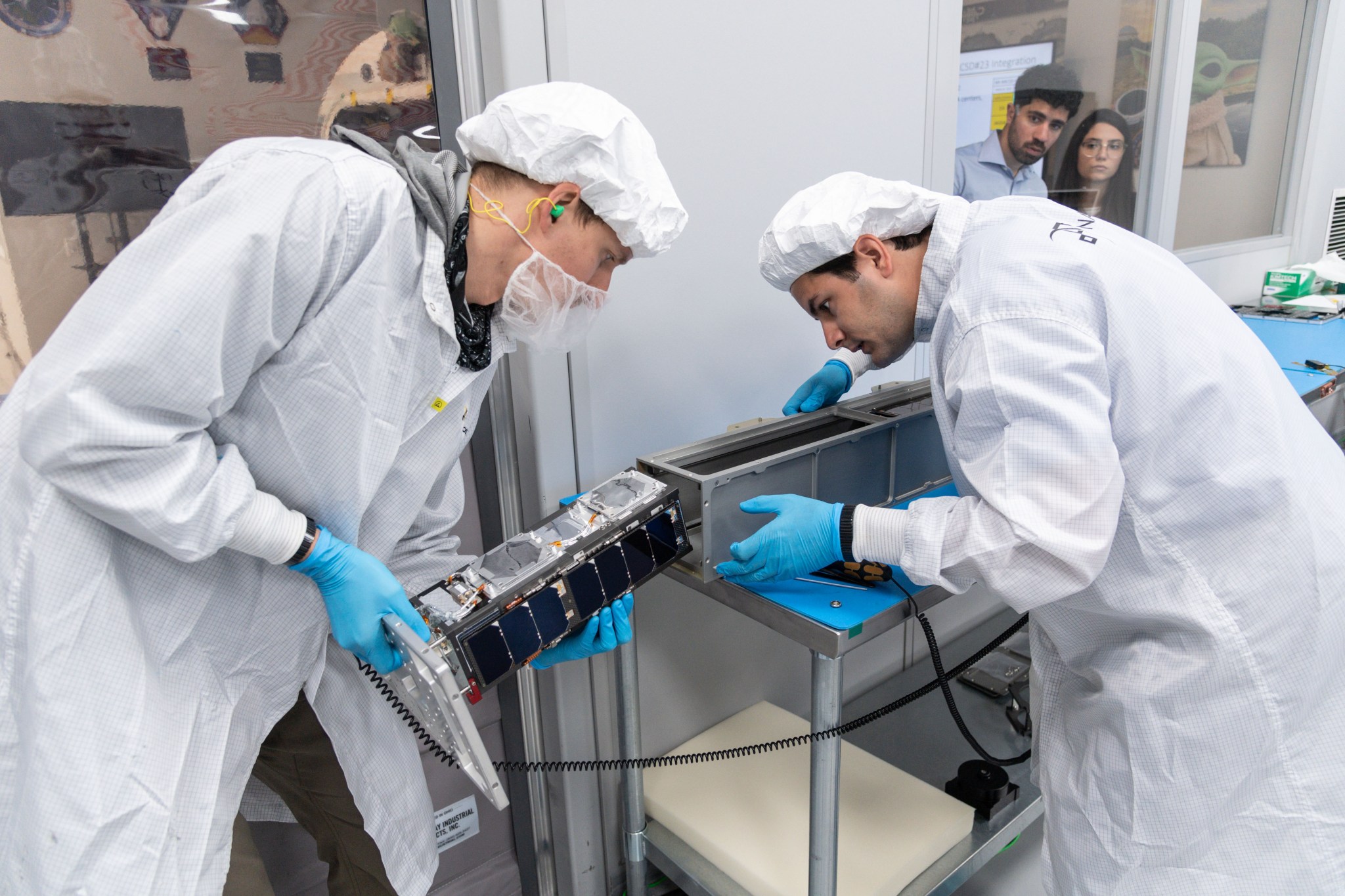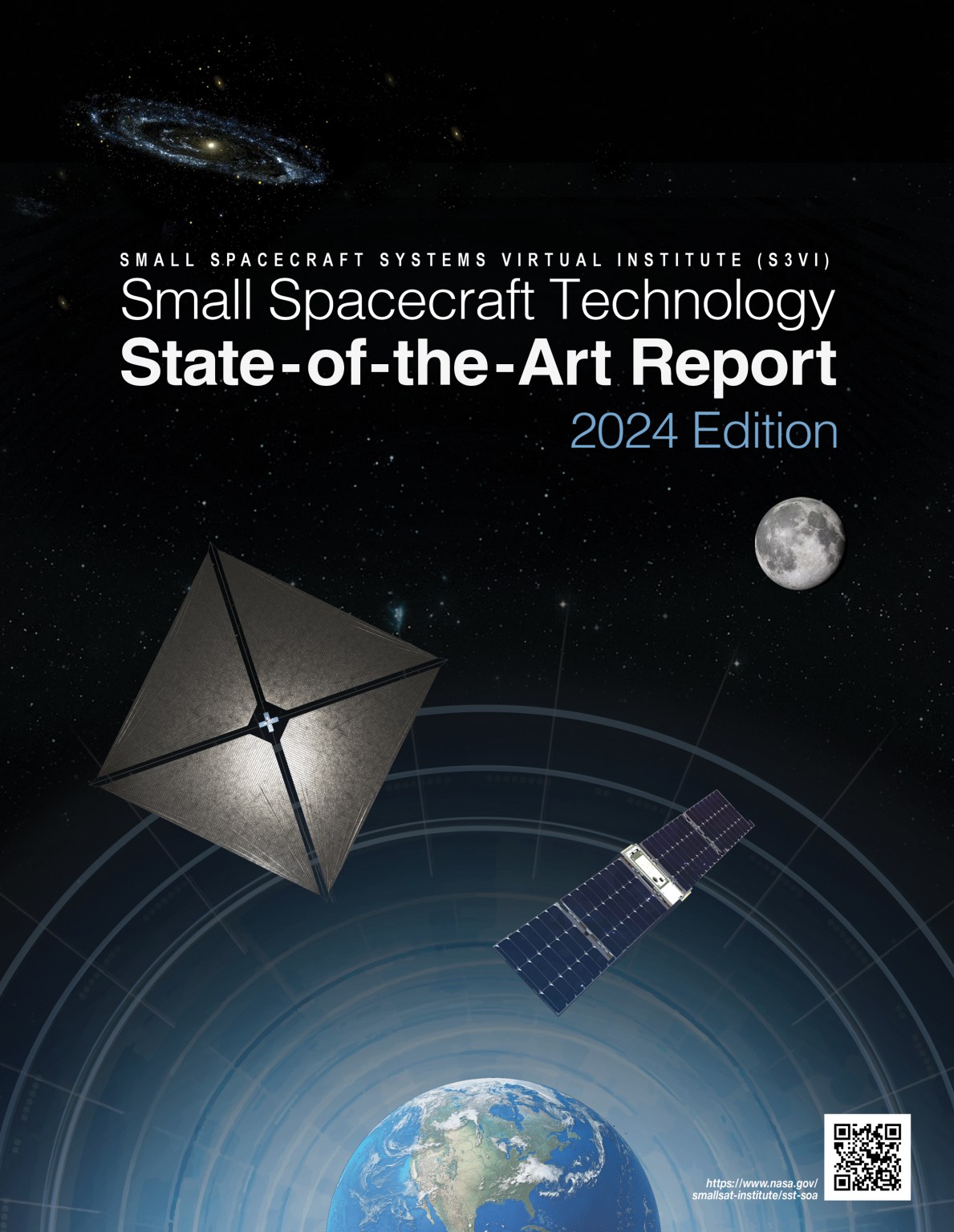
A small CubeSat carrying laser communications technology is readying for launch. Engineers are preparing the NASA-supported CLICK A CubeSat for launch no earlier than July 14, 2022, aboard SpaceX’s 25th Commercial Resupply Service (CRS-25) mission to the International Space Station as part of the next ELaNa (Educational Launch of Nanosatellites) mission.
Laser communications – also known as optical communications – offers a higher data rate and greater power efficiency than current radio frequency systems used for spacecraft. The first of two sequential demonstrations in NASA’s CubeSat Infrared CrosslinK (CLICK) series, CLICK A aims to demonstrate low-cost, one-way optical communications via a downlink to a ground station using commercially available components and one three-unit (3U) CubeSat. Following successful demonstration, the same components will be utilized in CLICK B/C’s two spacecraft to demonstrate two-way – or crosslink – communication. The optical communications systems demonstrated by the CLICK series could provide high-speed communication and data transfer capabilities between multiple small spacecraft, known as swarms or constellations, enabling them to work together on tasks like planetary observation or assembly and repair of larger spacecraft.
CLICK A will be deployed from the space station into low-Earth orbit, where it will test a spacecraft pointing system. Using a low-power laser, CLICK A will establish a downlink with an optical ground station by pointing the spacecraft toward the ground station telescope – located at the Massachusetts Institute of Technology’s Wallace Observatory in Westford, Massachusetts – and then employing a fine steering mirror to direct the laser with even more precision. This two-step pointing allows the system to maintain a high performance while reducing its cost, even in a small size.
Technologists will evaluate the hardware and software supporting CLICK A’s pointing and optical communications systems, assessing the performance of both the spacecraft and the optical ground station, and address any technical challenges that arise with any of the systems. Ultimately, the CLICK series aims to demonstrate improved communications between multiple small spacecraft while benefiting from faster, more energy-efficient laser communications systems.
The Massachusetts Institute of Technology in Cambridge, in partnership with the University of Florida in Gainesville, designed and built the CLICK laser communication terminals – the devices that send and receive optical communications data through space. The spacecraft was built by Blue Canyon Technologies, LLC, of Lafayette, Colorado, and then handed over to Houston-based Nanoracks, LLC, which is providing the CubeSat dispenser and launch integration support. The CLICK series of missions is managed and funded by NASA’s Small Spacecraft Technology program. ELaNa missions are managed by NASA’s Launch Services Program (LSP), based at the agency’s Florida spaceport.
About NASA’s Small Spacecraft Technology Program
The Small Spacecraft Technology program, part of NASA’s Space Technology Mission Directorate, expands the ability to execute unique missions through rapid development and demonstration of capabilities for small spacecraft applicable to exploration, science, and the commercial space sector. Projects funded by the Small Spacecraft Technology program may be executed at academic institutions, in the private sector, at NASA centers, as industry partnerships, or cooperative agreements. The program office resides at NASA’s Ames Research Center in California’s Silicon Valley.































